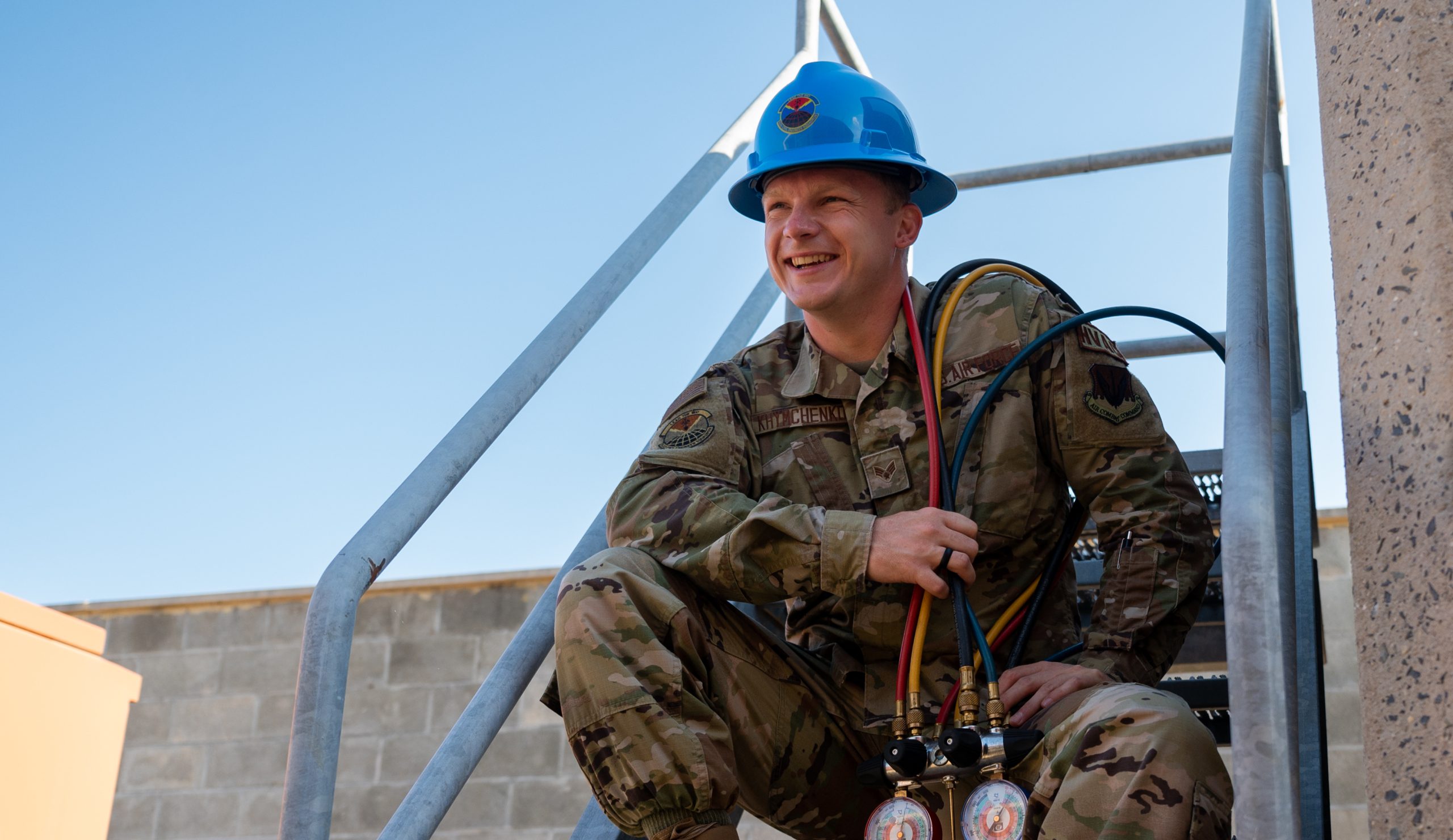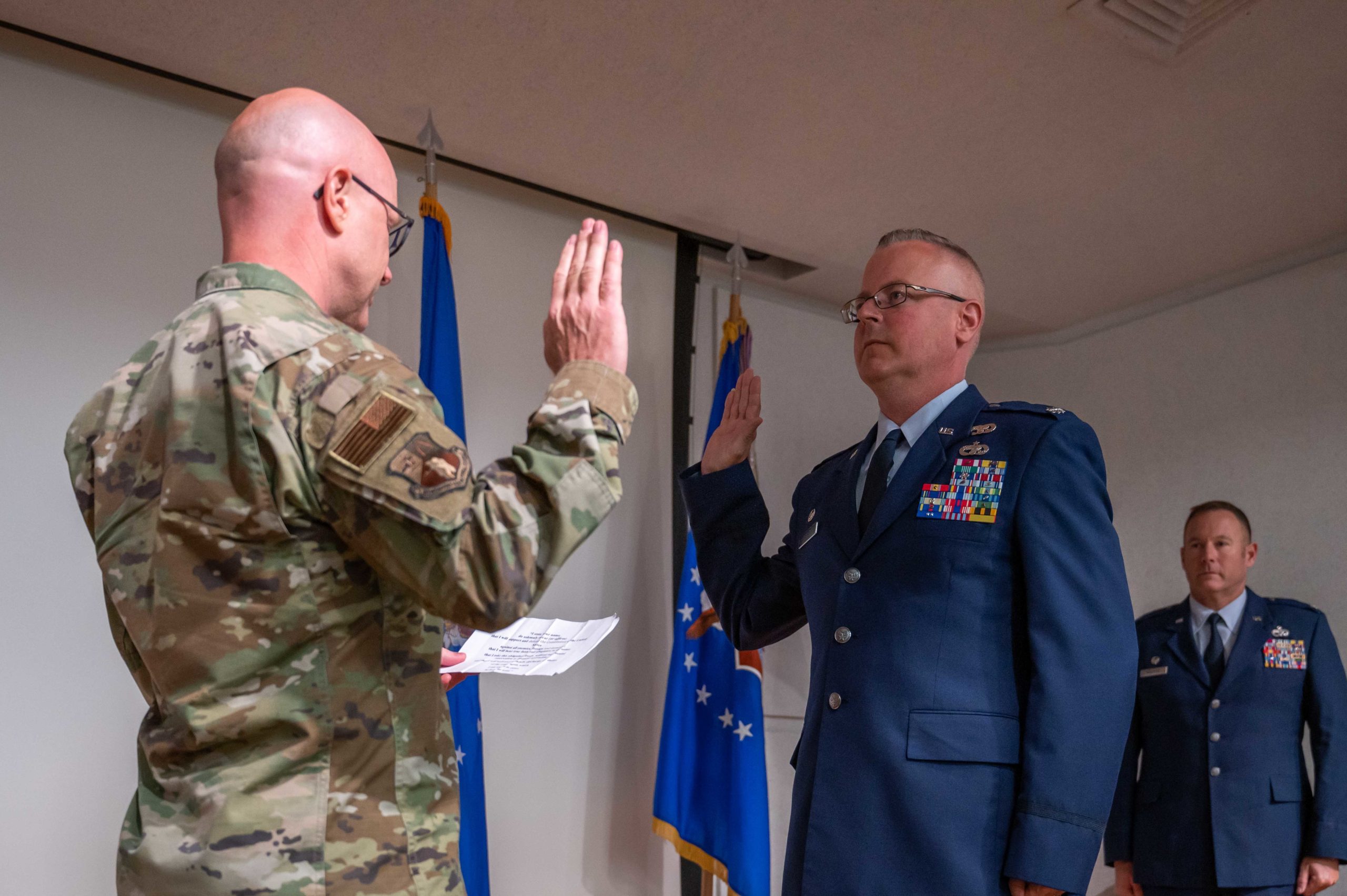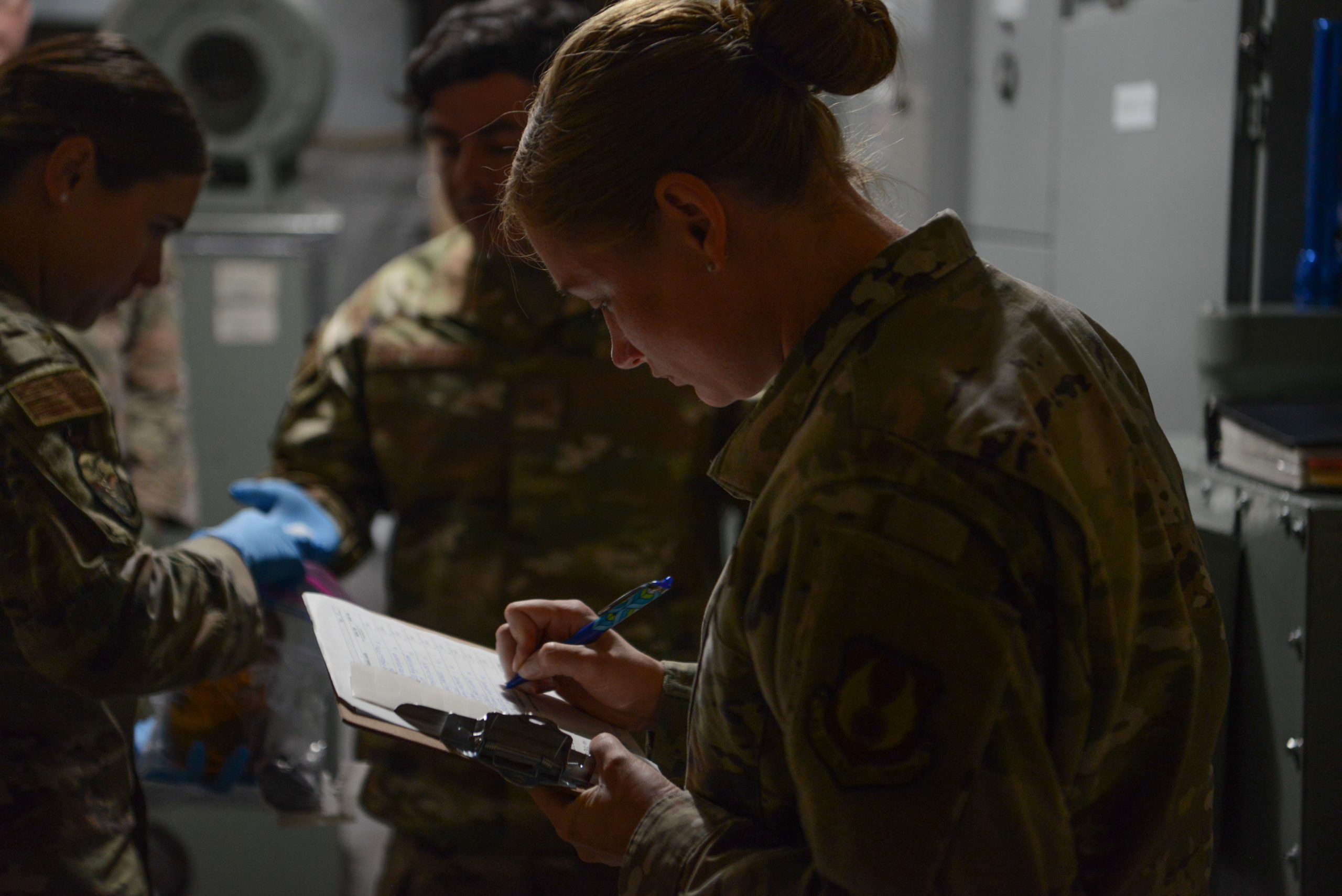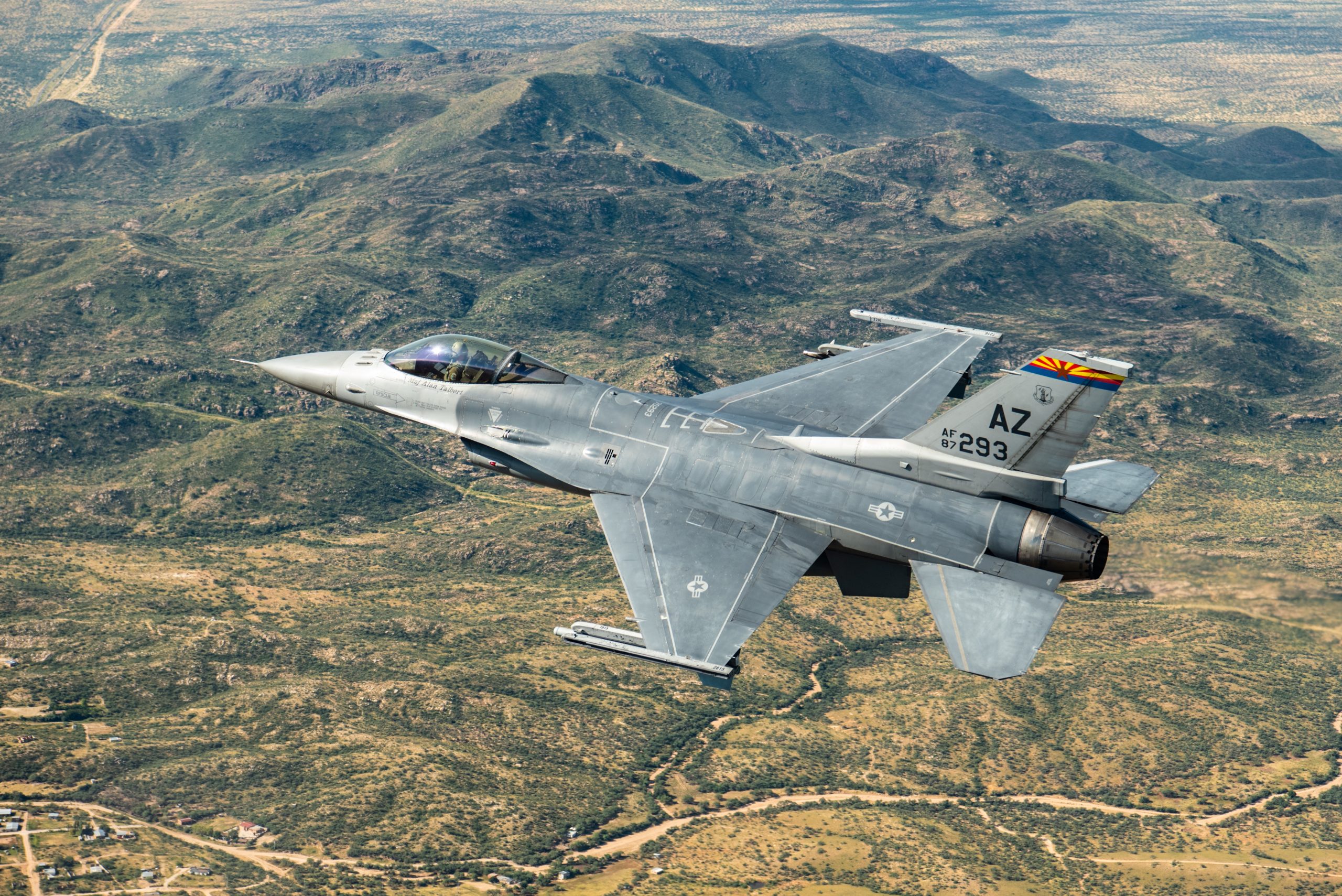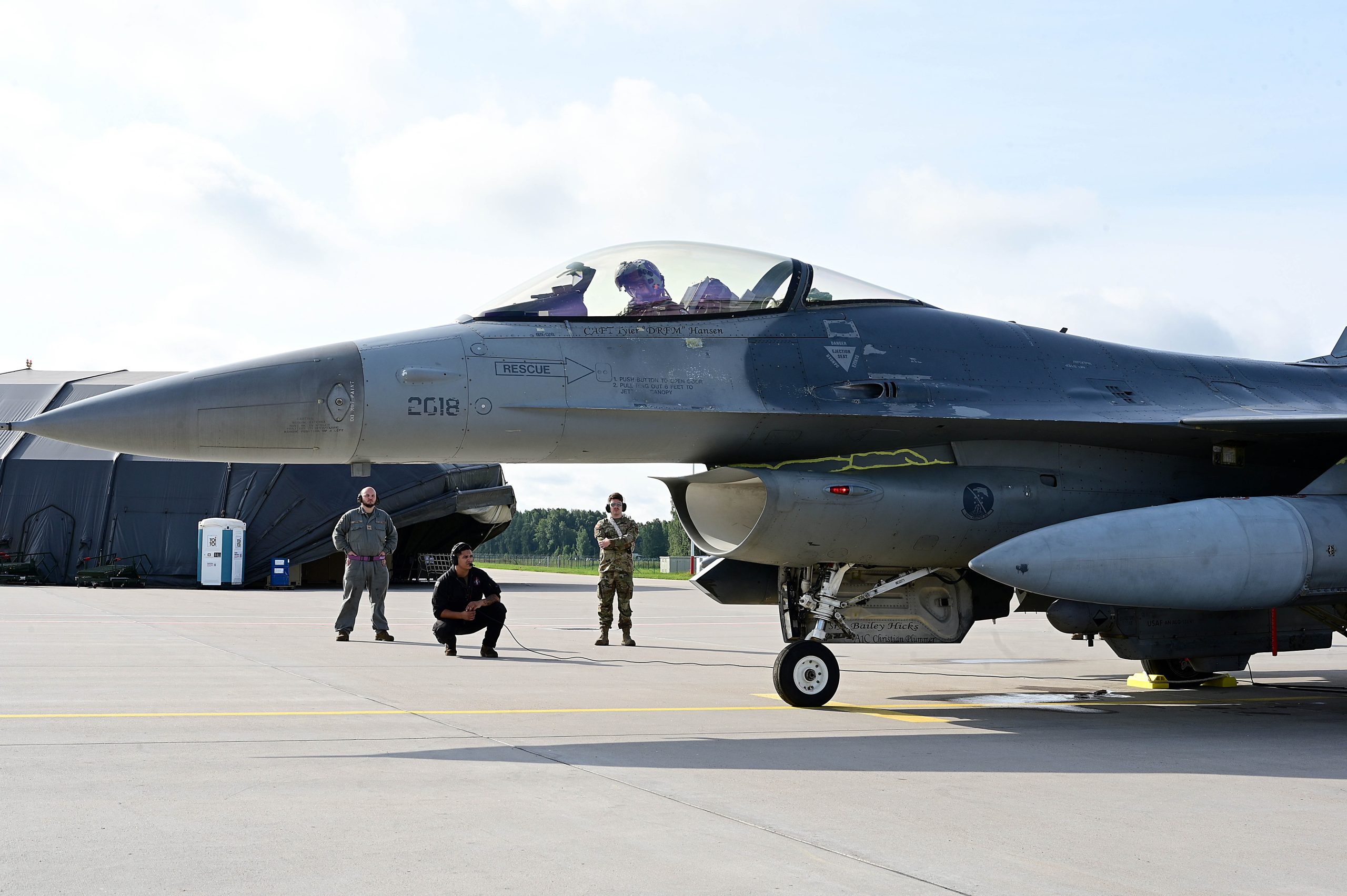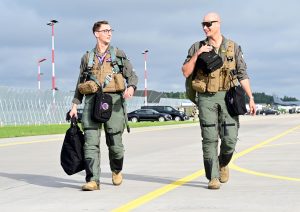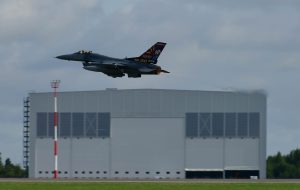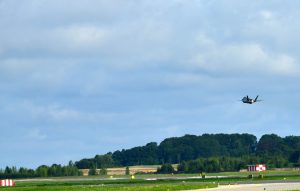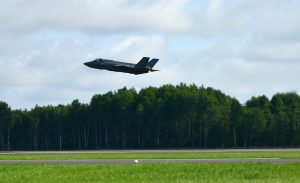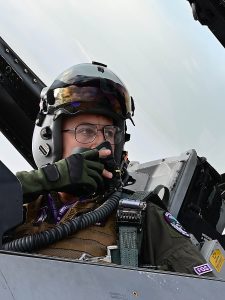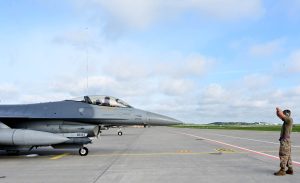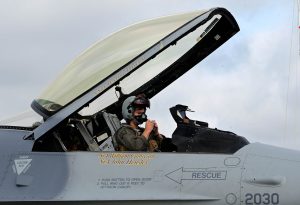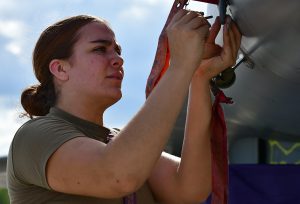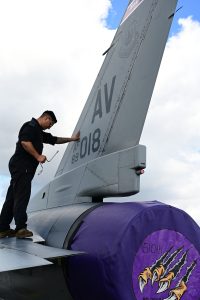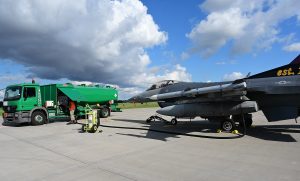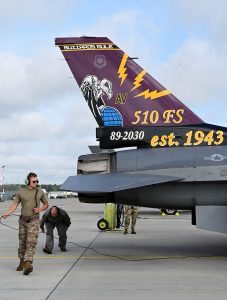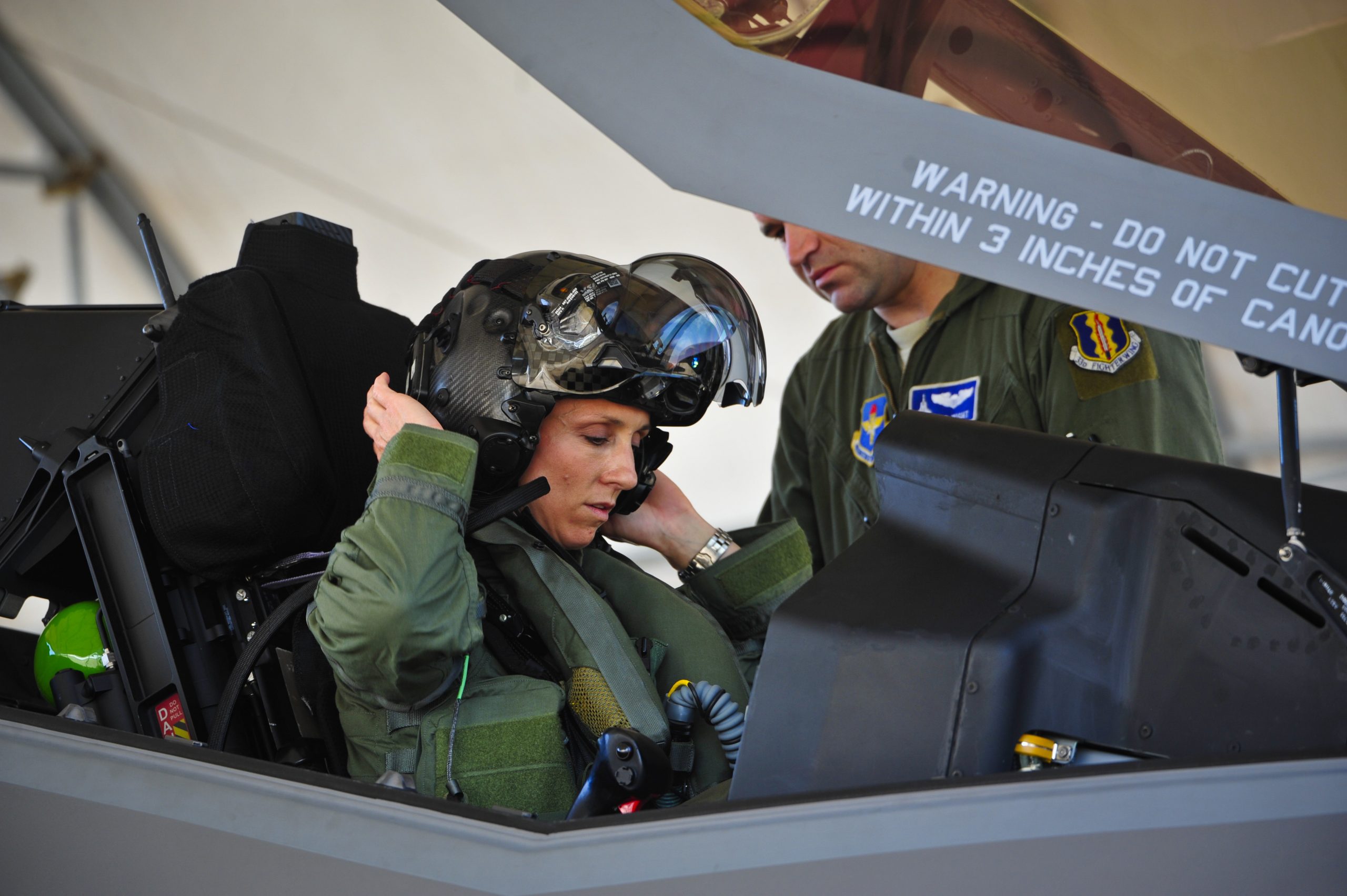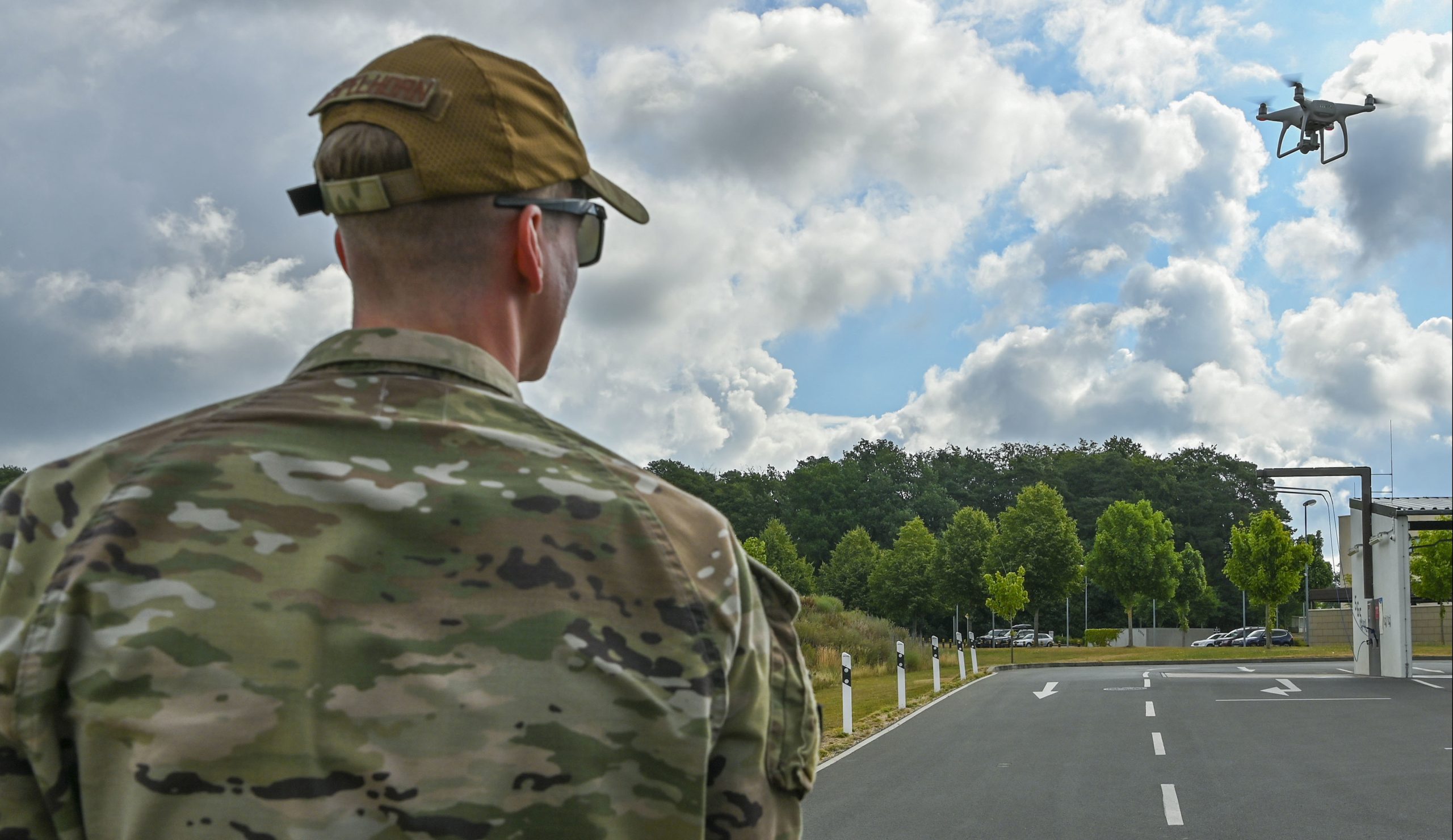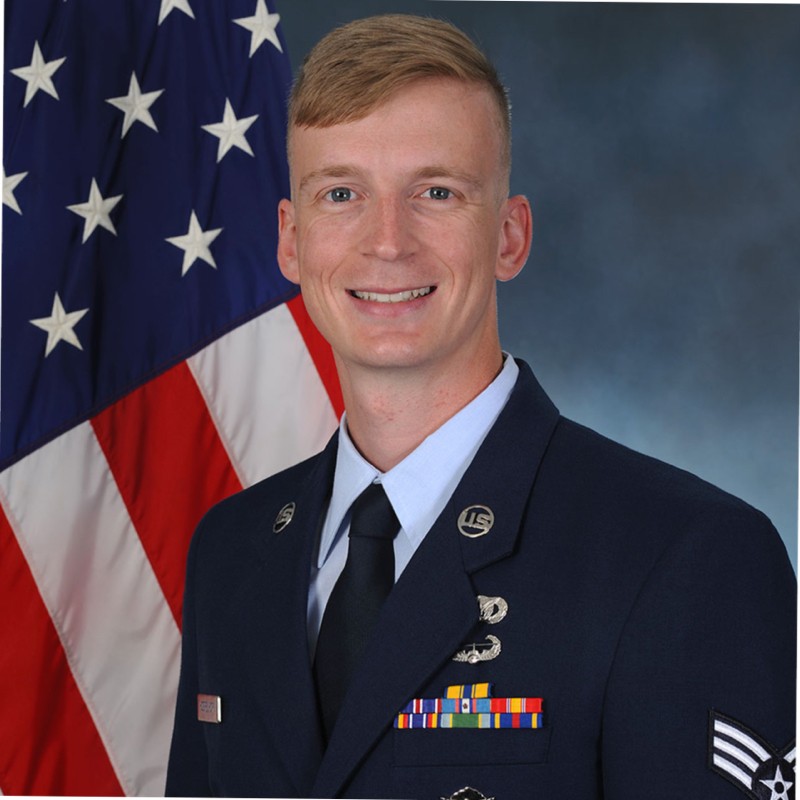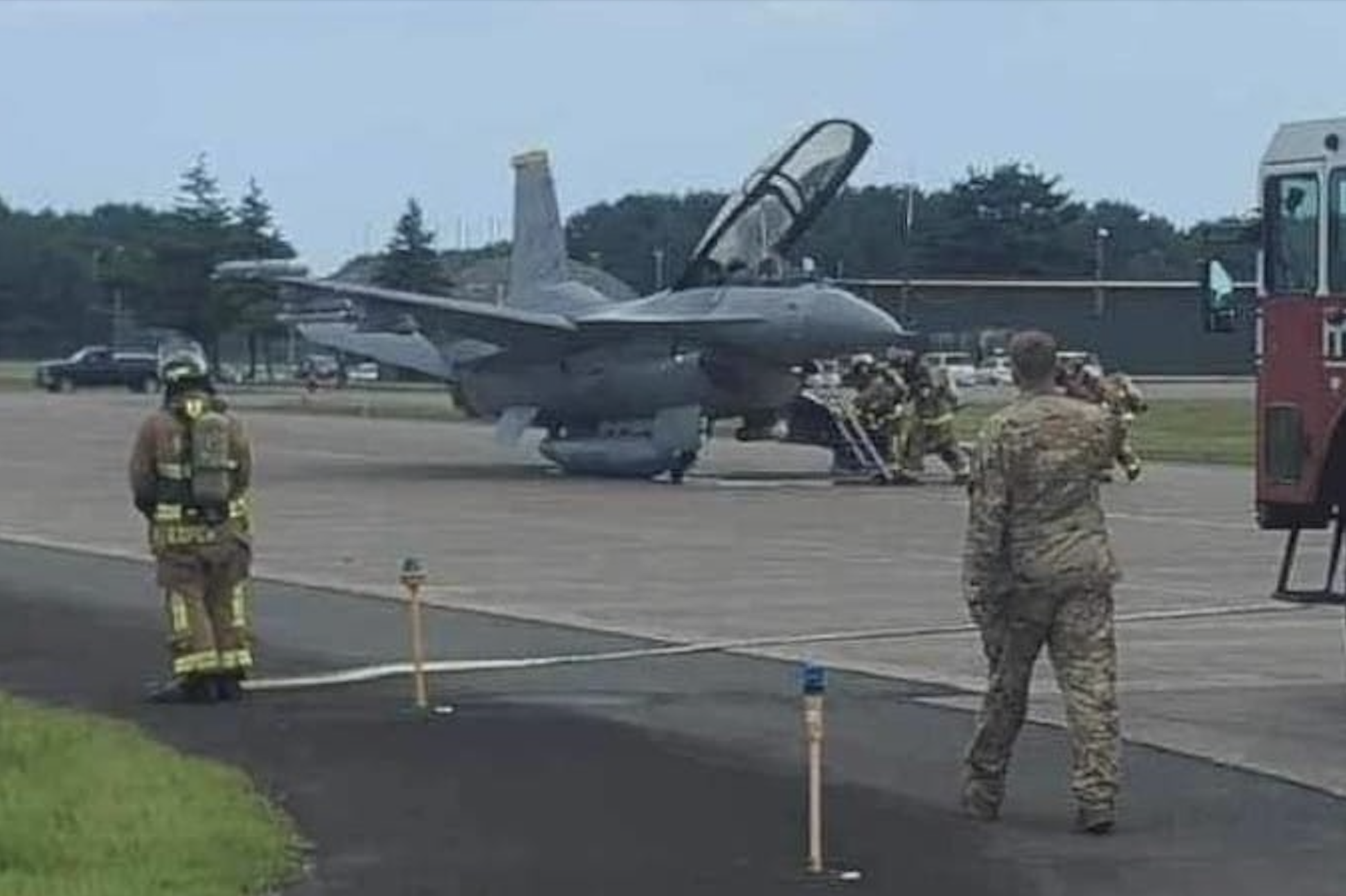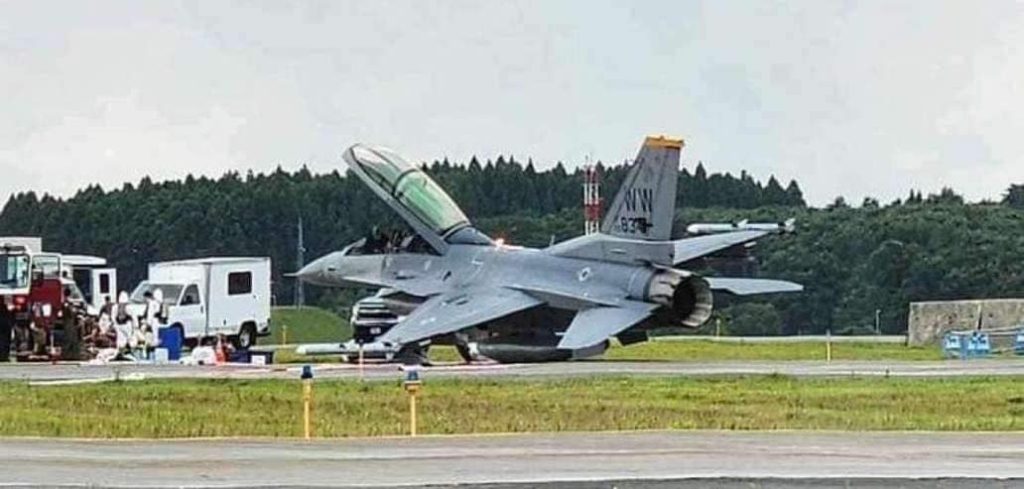The Air Force’s 12 Outstanding Airmen of the Year for 2023 will be formally recognized at AFA’s Air, Space & Cyber Conference from Sept. 11-13 in National Harbor, Maryland. Air & Space Forces Magazine is highlighting one each weekday from now until the conference begins. Today, we honor SrA. Kostiantyn Khymchenko (or, “KK”), an HVAC Journeyman with the 633rd Civil Engineer Squadron at Joint Base Langley-Eustis, Va.
Khymchenko and his family are from Konotop, Ukraine, where he was a cadet in school and served as a Ukrainian border and customs protection officer after graduating. He enlisted in the U.S. Air Force just eight months after moving to the U.S. in June 2019 on a diversification visa.
“All my life, I just serve,” he said. “When I come here, at first, I wanted [to join the] Army, but obviously when all my friends found out I wanted [to] be military person [they were] like, ‘No, only Air Force.’”
In 2022, Khymchenko was selected for deployment in support of Operation Atalas Guardian. He was only given a day’s notice to pack and board a plane to Germany where, as a native Ukrainian speaker, he would lead eight translators in 50 multinational teleconferences and advise four general officers on partner-nation air defense. Khymchenko also was part of USAF’s “Grey Wolf Team,” a task force at Ramstein Air Base that advises Ukraine’s air force on their defensive campaigns against Russia’s invasion.
“I’m so proud and so grateful [for the Airmen and officers] who work over there right now,” he said. “They did amazing job. For real. They did everything like it was [their] native country.”
During his deployment, Khymchenko translated more than 30 tactical maps and transmissions from Russia, intel that provided Ukraine with the location of more than 400 sites and 1,500 real-time missile launch alerts. His contributions and determination increased the survivability of 40 aircraft, $2 billion in assets, and 8 million lives. Khymchenko said he was just doing his job.
“I was [only] tools [that helped],” he said. “I try to build friendship with our Ukrainian partner. And I think I was successful on this mission.”
Khymchenko said his mission and assignments were made infinitely more meaningful because as a USAF Airman, he was able to support a country he called home for nearly 30 years during its time of crisis.
“I tried to do best that I can do because I grew up in this country,” he said. “I have a lot of friends who [fight right now] and I have also friends who die right now … It’s very emotional. It’s almost like emotional stress, because you want to do something great. But same time, you cannot go over there and fight to help them. But you can help from, like, 603 AOC to help do something good.”
In return for his service, both Khymchenko’s home country and his new one showed their gratitude. He was coined by both the Secretary of the Air Force Frank Kendall and Chief Master Sergeant of the Air Force JoAnne Bass, and he was presented with the Ukraine Support Medal by Ukraine’s Grand Minister of Defense Oleksii Reznikov. When they called Khymchenko’s name at the ceremony to come on stage and accept the award, he said he was shocked at the gratitude Reznikov showed him.
“I was so surprised, for real. I just forgot everything,” he said. “In Ukraine, when you get some awards, you need to salute, shake, take. But here it’s different. You need to shake, take, salute. And when I tried [to] salute when he gave me the award, and he began [to] hug me, I was so confused. … It was a very good memory [of] this mission.”
Stateside at Langley in his regular duty as an HVAC Journeyman, Khymchenko was named Wing Airman of the Quarter for the second quarter of 2022 for his leadership with 12 engineers to complete 742 jobs and respond to 36 emergencies, including the protection of a $10 million ISR server farm. His leadership earned him another coin, this one from the commander of Air Combat Command.
“Every time when I go to job, I try to fix everything,” Khymchenko said. “Sometimes I stay late. Sometimes if I cannot fix it, when I come back home, I cannot sleep because [I’m still thinking] about the job. … It doesn’t matter if it’s some server, or it’s dorms, or it’s vehicle maintenance—[it’s all] important, because our primary job: take care of Airmen.”
When he considers his latest award of distinction as one of the 12 Outstanding Airmen of 2023, Khymchenko said he’s honored, but he also feels bad because there were so many other people—fellow enlisted Airmen, other members of the Grey Wolf Team, and his leadership—who were doing great work right alongside him.
“And also, all of my commanders here. I just did, like, 30 percent of this award—my leadership [did the rest],” he said. “And I so appreciate all the support.”
“[But] I want to thank my wife first of all, because when I went to deploy to Germany, [she took] care of our kids, and it was very hard,” Khymchenko added. Inspired by his model of service, his wife Dariia joined the Air Force in 2022. An Airman First Class, Dariia Khymchenko is a Contracting Specialist with the 633rd Contracting Squadron alongside her husband at Langley.
Meet the other Outstanding Airmen of the Year for 2023 below:
